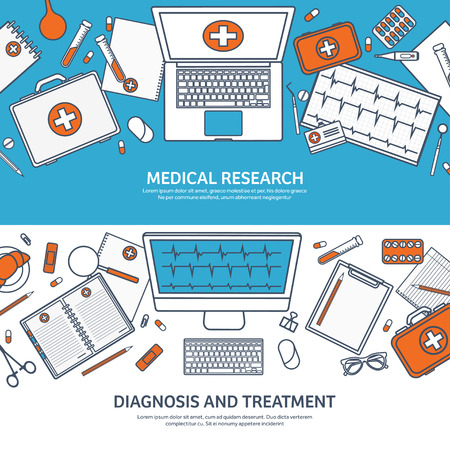1. Introduction to Ethnic Skin and Laser Treatments
The UK is home to a richly diverse population, encompassing a wide range of ethnic backgrounds and skin types. This diversity is particularly evident in urban centres such as London, Birmingham, and Manchester, where communities with Fitzpatrick skin types IV to VI are increasingly seeking cosmetic interventions, including laser treatments. In the context of ethnic skin, commonly referred to as skin of colour, there are distinctive physiological characteristics such as increased melanin content, which can influence both treatment outcomes and susceptibility to adverse events. Laser treatments commonly utilised in the UK for hair removal, pigmentation disorders, and scar revision must therefore be carefully tailored to account for these unique attributes. Clinicians working within the NHS and private sectors face particular challenges in selecting appropriate devices and protocols that minimise complications such as post-inflammatory hyperpigmentation or scarring. Addressing disparities in adverse event reporting requires not only technical expertise but also a nuanced understanding of the cultural expectations and healthcare experiences of patients from diverse backgrounds.
2. Current Landscape of Adverse Event Reporting
The reporting of adverse events related to laser treatments in ethnic skin within the UK is shaped by both national regulatory frameworks and clinical practice standards. However, significant disparities persist in how these events are documented and represented across different ethnic groups.
Overview of Reporting Mechanisms
Adverse event reporting in the UK typically involves healthcare professionals submitting data to central bodies such as the Medicines and Healthcare products Regulatory Agency (MHRA) or through local NHS trusts’ incident reporting systems. While these mechanisms aim to capture comprehensive information on patient safety, the inclusion of ethnicity-specific data is inconsistent and often non-mandatory. This results in gaps in understanding how laser treatments affect patients with varying skin types, especially those from Black, Asian, and Minority Ethnic (BAME) backgrounds.
Disparities in Data Collection
A critical issue is the lack of standardised fields for recording ethnicity during incident reporting. Many forms either omit this category or provide limited options, leading to underrepresentation or misclassification. Additionally, some clinics—especially those in private or non-NHS settings—may not routinely collect demographic data at all, further compounding the problem.
Summary Table: Reporting Practices Across Settings
| Setting | Is Ethnicity Collected? | Reporting System Used | Data Accessibility |
|---|---|---|---|
| NHS Hospitals | Inconsistently | Datix/NHS Incident Systems | Internal; limited public access |
| Private Clinics | Rarely | Proprietary/Ad hoc Systems | Not publicly accessible |
| Research Studies | More Consistently | Ethics-Approved Databases | Published summaries only |
| Voluntary Patient Reports | Sporadically | MHRA Yellow Card Scheme | Anonymised public summaries |
Lack of Representation in Published Data
The underreporting of adverse events among ethnic minority populations leads to a knowledge gap. Most published studies and safety audits feature predominantly lighter skin phototypes (Fitzpatrick I–III), with minimal representation from darker phototypes (IV–VI). This imbalance skews risk assessments and may result in insufficient guidelines for clinicians treating diverse patient populations.
Cultural and Systemic Barriers to Reporting
Cultural factors can also deter patients from ethnic backgrounds from reporting complications, either due to mistrust in healthcare institutions or concerns about stigma. Combined with systemic issues—such as lack of multilingual resources and culturally competent care—these barriers further suppress accurate data collection.
The current landscape demonstrates a clear need for more robust, inclusive, and standardised approaches to adverse event reporting in laser treatments for ethnic skin. Without addressing these disparities, efforts to improve patient safety and treatment outcomes will remain incomplete.
![]()
3. Barriers to Accurate Reporting
Accurate reporting of adverse events in laser treatments for ethnic skin remains a significant challenge within the UK healthcare context. Several cultural, systemic, and operational barriers contribute to the under-reporting or misreporting of these incidents, ultimately hindering improvements in patient safety and clinical outcomes.
Cultural Factors
One major barrier is the cultural perception of skin conditions and cosmetic interventions among various ethnic communities. In some cases, there may be stigma associated with seeking treatment for pigmentation issues or other laser-related complications, leading patients to avoid disclosing adverse outcomes. Additionally, language barriers and differing expectations regarding healthcare can impede clear communication between patients and practitioners, making it difficult to capture an accurate account of post-treatment events.
Systemic Challenges
Within the NHS and private sector, systemic issues such as insufficient training on skin diversity and limited representation of ethnic minorities in clinical guidelines further exacerbate disparities. Many standardised adverse event forms are not tailored to capture nuances specific to darker skin tones, resulting in missed or inaccurately classified data. Furthermore, time pressures in busy clinics often leave little room for thorough follow-up with patients who may be experiencing delayed or subtle side effects.
Operational Limitations
Operationally, the lack of robust tracking systems for adverse events related to laser treatments presents another obstacle. Clinics may not have dedicated protocols for recording incidents by skin type or ethnicity, which leads to incomplete data sets. This gap is compounded by inconsistent staff training on recognising early signs of complications in ethnic skin, where presentations may differ from those seen in lighter phototypes.
Professional Reluctance
A less discussed but crucial barrier is professional reluctance: practitioners may hesitate to report adverse events due to concerns about reputational damage or fear of legal repercussions. This reluctance is particularly pronounced when treating patients with complex skin types, where complication rates may be higher due to lack of evidence-based guidance tailored for ethnic skin.
Towards Solutions
Addressing these multifaceted barriers requires a concerted effort involving cultural competence training, improved data collection frameworks, and fostering an open environment where both patients and clinicians feel empowered to report all adverse outcomes without fear or stigma. Only by acknowledging and systematically addressing these obstacles can we hope to improve both the quality of care and equity in reporting for ethnic skin laser treatments in the UK.
4. Impact on Patient Safety and Outcomes
The disparities in adverse event reporting within laser treatments for ethnic skin types have far-reaching implications that extend beyond clinical data, directly impacting patient safety, treatment efficacy, and overall trust in the healthcare system among ethnic communities.
Patient Safety Concerns
Underreporting or inconsistent reporting of adverse events can lead to a lack of comprehensive understanding regarding the risks associated with laser procedures in patients with darker skin tones. This gap can result in practitioners being unaware of potential complications unique to ethnic skin, such as post-inflammatory hyperpigmentation, hypopigmentation, scarring, or burns. As a consequence, patients may face an increased risk of preventable harm during or after treatment.
Treatment Efficacy and Clinical Decision-Making
Reliable adverse event data is crucial for informing evidence-based guidelines. Disparities in reporting mean that clinical protocols may not be optimally tailored for ethnic skin types, potentially compromising treatment outcomes. Practitioners may either overtreat or undertreat due to uncertainty, affecting both the effectiveness and safety of interventions. The table below summarises how these disparities affect key aspects of care:
| Aspect | Impact of Reporting Disparities |
|---|---|
| Risk Assessment | Incomplete knowledge of specific complications in ethnic skin leads to inadequate risk mitigation strategies. |
| Treatment Planning | Lack of robust data results in conservative or inappropriate parameter selection, reducing efficacy. |
| Follow-Up Care | Poor understanding of long-term outcomes hinders appropriate monitoring and intervention. |
Trust in the Healthcare System
The perception that adverse events are underreported or overlooked can undermine trust among patients from ethnic backgrounds. Mistrust may deter individuals from seeking necessary dermatological care or participating in follow-up appointments, thereby perpetuating health inequalities. Building confidence requires transparent communication about risks and active efforts to address these disparities.
Towards Equitable Care
Addressing gaps in adverse event reporting is not merely a matter of data collection; it is central to ensuring equitable care and positive patient experiences across all communities. Bridging this gap will empower practitioners to deliver safer, more effective treatments while fostering trust and engagement among diverse patient populations.
5. Best Practices and Policy Recommendations
Enhancing Reporting Systems for Ethnic Skin
To address disparities in adverse event reporting for laser treatments on ethnic skin, it is essential to establish robust and inclusive reporting systems. Clinicians should be encouraged to provide detailed documentation of patient ethnicity, Fitzpatrick skin type, and specific adverse events in medical records and incident reports. NHS trusts and private clinics alike can benefit from standardised templates that prompt clinicians to capture this vital information, ensuring a more accurate reflection of experiences across diverse populations.
Fostering Inclusivity in Clinical Practice
Greater inclusivity begins with awareness and education. Continuous professional development should include training modules focused on recognising and managing laser-related adverse events unique to ethnic skin types. By integrating cultural competence into core curricula and CPD requirements, clinicians are better equipped to identify subtle presentations and contribute meaningful data to adverse event databases. Collaboration with local communities—particularly those underrepresented in clinical research—will further ensure that concerns are heard and addressed.
Policy Interventions for Equitable Care
Policymakers have a critical role in mandating the collection and analysis of ethnicity-specific data related to laser treatment outcomes. Establishing national registries or databases overseen by public health authorities would facilitate trend analysis, inform safety guidelines, and highlight gaps in care. Regulatory bodies such as the Care Quality Commission (CQC) can introduce minimum standards for ethnic data reporting as part of their inspection criteria for clinics offering aesthetic laser procedures.
Industry Responsibility and Collaboration
The aesthetics industry must prioritise research and product development that reflects the needs of patients with ethnic skin. Manufacturers can support this by investing in clinical trials that enrol diverse participants, publishing device safety profiles stratified by skin type, and providing comprehensive guidance for practitioners. Open dialogue between device manufacturers, clinicians, and regulatory agencies is essential for updating training materials and safety recommendations as new evidence emerges.
Empowering Patients Through Transparency
Finally, empowering patients with accessible information about risks, benefits, and expected outcomes is crucial. Culturally sensitive educational resources should be co-developed with patient advocacy groups to build trust and encourage individuals from all backgrounds to report adverse events without fear or stigma. Together, these best practices and policy interventions will move us closer to equitable care in laser treatments for ethnic skin throughout the UK.
6. Case Studies from UK Clinics
In examining how disparities in adverse event reporting for ethnic skin laser treatments are being addressed, several UK-based clinics and initiatives provide valuable insights. One notable example is the London Skin Clinic, which has implemented a targeted training programme for practitioners on recognising and documenting adverse reactions in patients with Fitzpatrick skin types IV–VI. This initiative not only improved reporting accuracy but also fostered greater trust among diverse patient groups by demonstrating cultural competence and clinical sensitivity.
Another case worth mentioning is the collaborative project between the British Association of Dermatologists (BAD) and NHS Trusts across Greater Manchester. Their pilot study involved standardising adverse event forms to include ethnicity-specific data points and encouraging open dialogue about treatment outcomes with patients from minority backgrounds. Early results indicated a marked increase in the reporting of mild to moderate side effects, suggesting that previous underreporting was, at least in part, due to inadequate data capture and patient engagement methods.
Moreover, the Skin of Colour Society UK Chapter conducted community outreach sessions at Birmingham clinics, focusing on raising awareness about potential side effects unique to ethnic skin when undergoing laser therapy. These efforts not only educated patients but also empowered them to report any concerns post-treatment without fear of stigma or dismissal. Feedback from these sessions highlighted the importance of culturally tailored communication in improving both the quality and frequency of adverse event reporting.
Collectively, these cases underscore the necessity of context-specific solutions within the UKs multicultural environment. By integrating enhanced practitioner education, standardised documentation, and patient empowerment strategies, these clinics have made significant strides towards reducing disparities in adverse event reporting for ethnic skin laser treatments.

